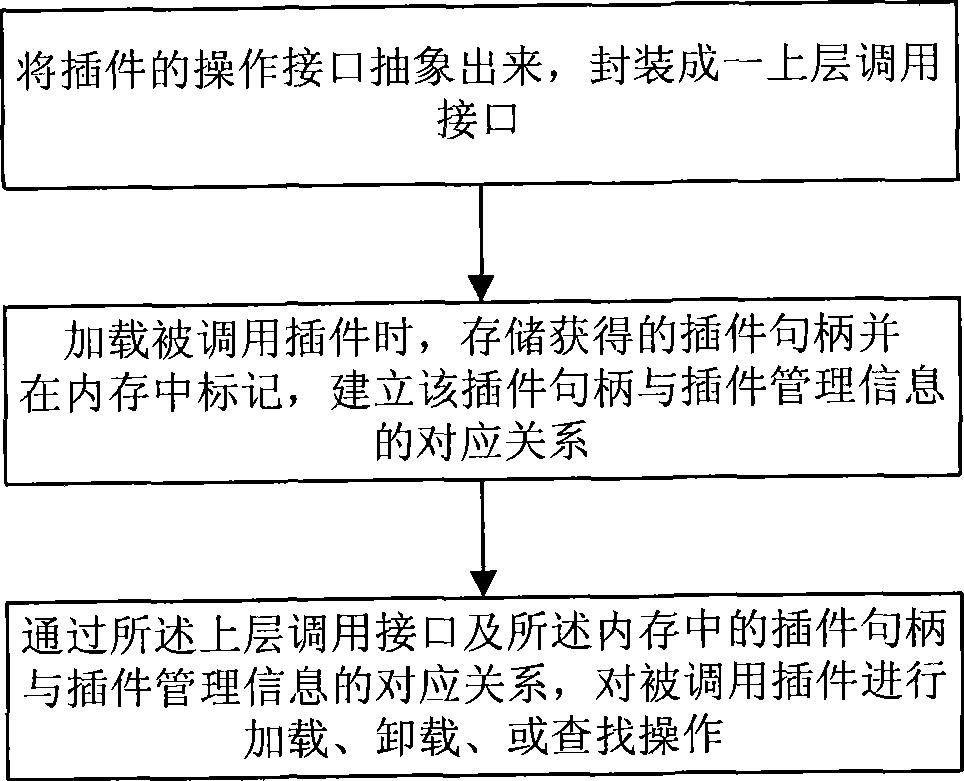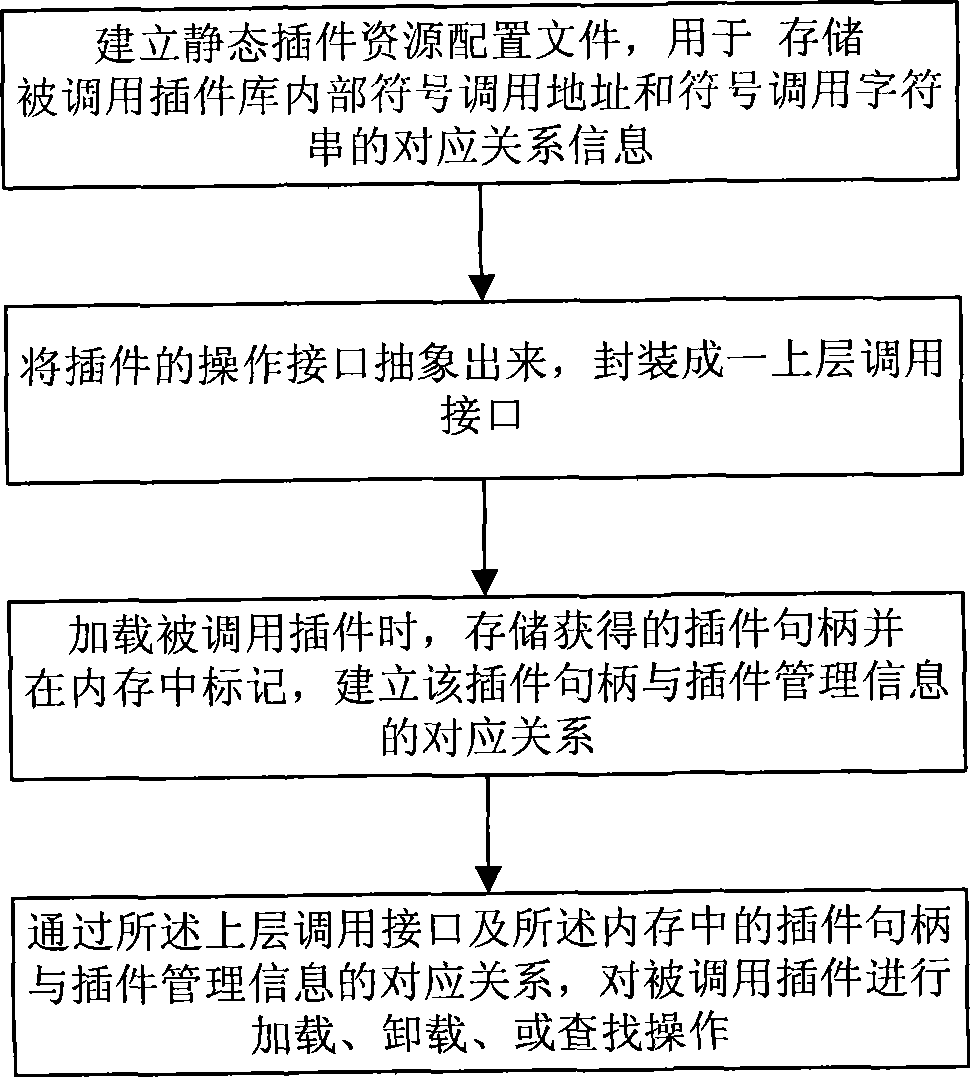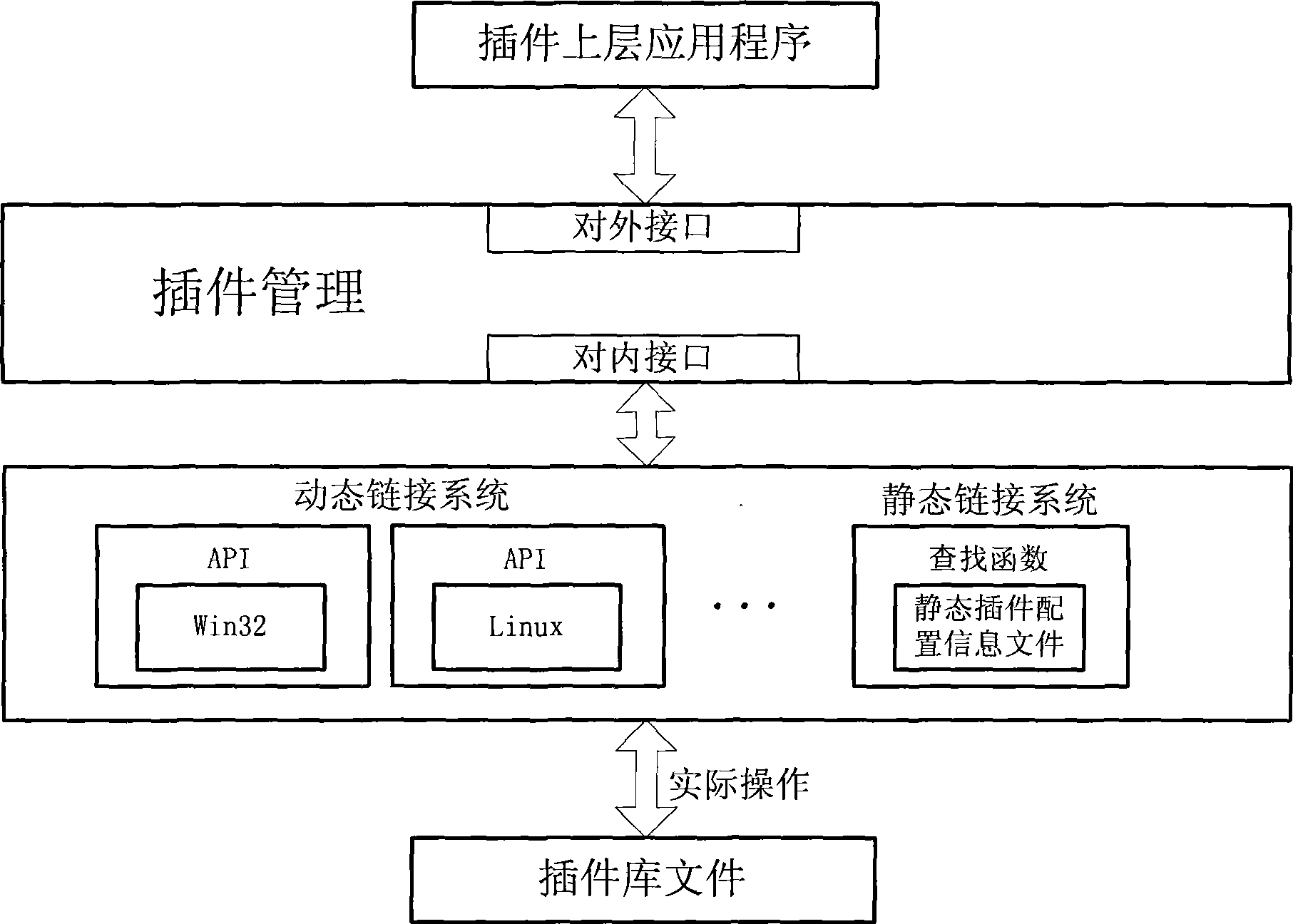Plug-in management method and system thereof
A management method and plug-in technology, applied in the directions of multi-programming devices, program loading/starting, program control devices, etc., can solve problems such as difficulty in program transplantation and damage to the cross-platform scalability of programs, and achieve improved scalability and extended use. range, and the effect of easy transplantation
- Summary
- Abstract
- Description
- Claims
- Application Information
AI Technical Summary
Problems solved by technology
Method used
Image
Examples
Embodiment Construction
[0032] Such as figure 1 As shown, the present invention provides a plug-in management method, which includes the following steps:
[0033] A. Abstract the operation interface of the plug-in and encapsulate it into an upper-layer calling interface;
[0034] B. When the called plug-in is loaded, the obtained plug-in handle is stored and marked in the memory, and the corresponding relationship between the plug-in handle and the plug-in management information is established; the plug-in management information here includes at least: plug-in name, plug-in handle, plug-in called count, and the resident memory attribute bit.
[0035] C. Perform loading, unloading, or search operations on the called plug-in through the upper-layer call interface and the corresponding relationship between the plug-in handle in the memory and the plug-in management information.
[0036] In order to store the corresponding relationship between the above-mentioned plug-in handle and plug-in management i...
PUM
 Login to View More
Login to View More Abstract
Description
Claims
Application Information
 Login to View More
Login to View More - R&D
- Intellectual Property
- Life Sciences
- Materials
- Tech Scout
- Unparalleled Data Quality
- Higher Quality Content
- 60% Fewer Hallucinations
Browse by: Latest US Patents, China's latest patents, Technical Efficacy Thesaurus, Application Domain, Technology Topic, Popular Technical Reports.
© 2025 PatSnap. All rights reserved.Legal|Privacy policy|Modern Slavery Act Transparency Statement|Sitemap|About US| Contact US: help@patsnap.com



